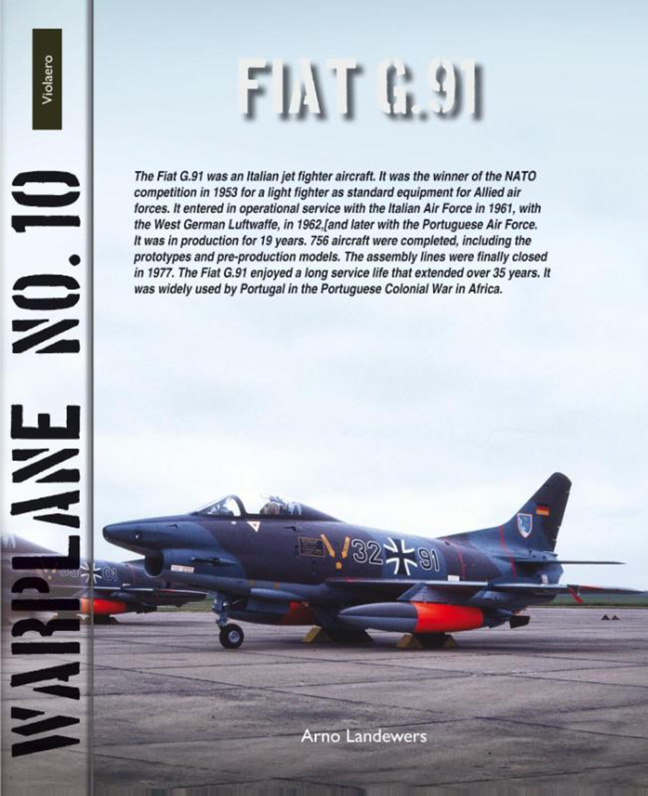Book contents
Introduction
Summary
The Fiat G.91 was based on NATO requirements and was developed in the second half of the fifties. It entered service with German and Italian air forces in the light strike role, and proved to be a sturdy and highly serviceable aircraft. With over 750 examples built it was a common sight at many exercises all over Europe.
For nearly 20 years the Italian Frecce Tricolori display team inspired countless spectators with their colorful aerial ballet. In 1995, after nearly forty years of service, the G.91 made its last flight.
G.91 ORIGINS
During the winter of 1953 NATO SHAPE (Supreme Headquarters, Allied Powers, Europe) issued the first NATO basic requirement (NBRM), which concerned specifications for a light weight tactical strike fighter. The specifications were based on experiences in the Korean war (which ended in the summer of that year), where it became increasingly obvious that jet aircraft should be less complex, and, for close air support, be able to operate from unpaved runways. In general, costs, weight and complexity of military aircraft were rising at an ever-increasing rate, which was reflected in practical issues like the amount of ground equipment and maintenance needed. Also, the NBRM was a product of the thought that standardization would lead to a more effective military power buildup, while logistics would simplify and that producing large batches of complex weapon systems could suppress costs. In fact a lot was learned from a Russian MiG.15 captured in Korea. A few aircraft manufacturers were issued the NBRM spec in the form of a restricted tender, where the designs submitted were assessed by the AGARD (NATO Advisory Group for Aeronautical Research and Development). Designs were received from Folland (Gnat), Hawker (lightweight version of Hunter), Bréguet (1002 Taon), Dassault (Mystère 26, later renamed Etendard VI), SNCASE (Durandal), Aerfer (Sagittario II) and Fiat (G.91). However, a number of designs were withdrawn again (for instance all British), for various reasons.
The Fiat design, the G.91, was a robust conventional aircraft, by contemporary press often described (and later almost standard cited) as having resemblance with the F-86 Sabre, something that could be said about every jet with a low swept wing, conventional shaped tail plane and nose-inlet. On the other hand, the license production of the F-86K gave Fiat a unique insight into design features of second generation jet planes, which without a doubt played a role in the G.91 design.
Information
- Type
- Chapter
- Information
- Fiat G.91 , pp. 4 - 56Publisher: Amsterdam University PressPrint publication year: 2014
